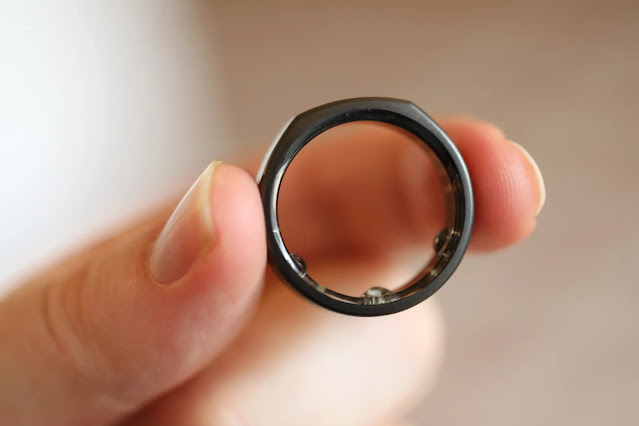The Oura Ring measures heart rate using photoplethysmography (PPG), a non-invasive optical technique. It works by emitting green and infrared light into the skin through tiny LEDs embedded in the ring. These lights penetrate the skin and detect changes in blood volume within the capillaries beneath the surface. As the heart pumps blood, these volume changes alter the amount of light absorbed, scattered, and reflected, creating a measurable signal.
The Oura Ring is also able to measure respiratory rate by detecting respiratory sinus arrhythmia -- a natural variation in heart rate during breathing cycles. Specifically, the heart rate increases during inhalation and decreases during exhalation. By identifying these patterns in the PPG signal, the Oura Ring calculates the number of breaths per minute, providing an accurate measure of respiratory rate.
Recently, the company Dexcom, which makes continuous glucose monitors, invested $75M in Oura (TechCrunch). Based on the terms of this investment, the market valuation of Oura now exceeds $5 billion. The goal of the partnership is to integrate the technologies of the two companies.
Dexcom specializes in continuous glucose monitoring (CGM) systems for people with diabetes. The company along with others have revolutionized diabetes management by offering real-time blood glucose data through a small wearable sensor. The big advantage of a CGM over glucose strips (along with avoiding finger pricks) is that the nearly continuous readings provide much more detailed data to help one manage diabetes.
The CGM device possesses a small probe (thin electrode) that is slightly invasive, i.e. it is inserted through the skin into the interstitial region between the skin and blood vessels (QH). Although the probe penetrates the skin, it does not access or draw any blood. The probe measures glucose levels in the interstitial fluid which is related to the blood glucose concentration. The sensor component is small, only about the size of half-dollar and can be placed on the arm.
One possibility is that the two companies are trying to develop a glucose sensor that can fit into the Oura Ring making continuous glucose monitoring even less intrusive. However, this is not likely because completely noninvasive (i.e. no needle or probe no matter how small) glucose measurement is not yet feasible in such a small form factor. In a previous post I described Apple’s attempts in this area using a technique called near-infrared spectroscopy (NIRS). The key concept is that different molecules (e.g. glucose, insulin, hemoglobin) will absorb light at different wavelengths, letting a specific pattern of wavelength intensities to be transmitted through the sample. In other words, different compounds will absorb different wavelengths of light to different extents creating a distinctive spectroscopic "fingerprint." Using this technique one can identify and quantitate a specific compound like glucose.
Unfortunately, such a technology may be years away from being embedded into the Apple Watch let alone the smaller sized ring. Mark Gurman of Bloomberg reported: "Apple’s system — more than 12 years in the making — is now considered to be at a proof-of-concept stage, said the people, who asked not to be identified because the project is confidential. The company believes the technology is viable but needs to be shrunk down to a more practical size."
The more likely possibility is that the Oura Ring can be used to provide contextual health insights that incorporate blood glucose data. In other words, the data from both devices can be integrated into a single platform, likely through an app. Users could then see how blood glucose levels fluctuate in response to lifestyle factors such as meal timing, physical activity, sleep quality, and stress. Users could see how their body reacts to certain foods or activities, enabling behavior adjustments to optimize health.
To be more specific, one use-case is figuring out the optimal time to eat. Oura has introduced features that allow users to log meal timing. When combined with CGM data, it can provide specific insights into how eating at different times impacts glucose levels, sleep, and recovery. More generally, one can imagine that the system could offer tailored advice on what and when to eat, exercise, or rest based on individual glucose responses and overall biometrics. It is a lofty goal but offers exciting promise.
Of course even better than the ring would be integration of CGM data with the Apple Watch and the ecosystem of health tracking information on Apple’s various devices and software. Such an alliance between Dexcom (or some other CGM maker) and Apple may not have happened because Apple wants to develop their own noninvasive glucose monitor described above. As a result, Dexcom and Apple may view each other as potential competitors down the line.
Figure 1. The Oura Ring will soon be integrated with Dexcom's continuous glucose monitors as part of a strategic alliance between the two companies. Information from both devices can be combined to provide a more holistic view of one's physiological health (image credit: Brian Heater).

No comments:
Post a Comment